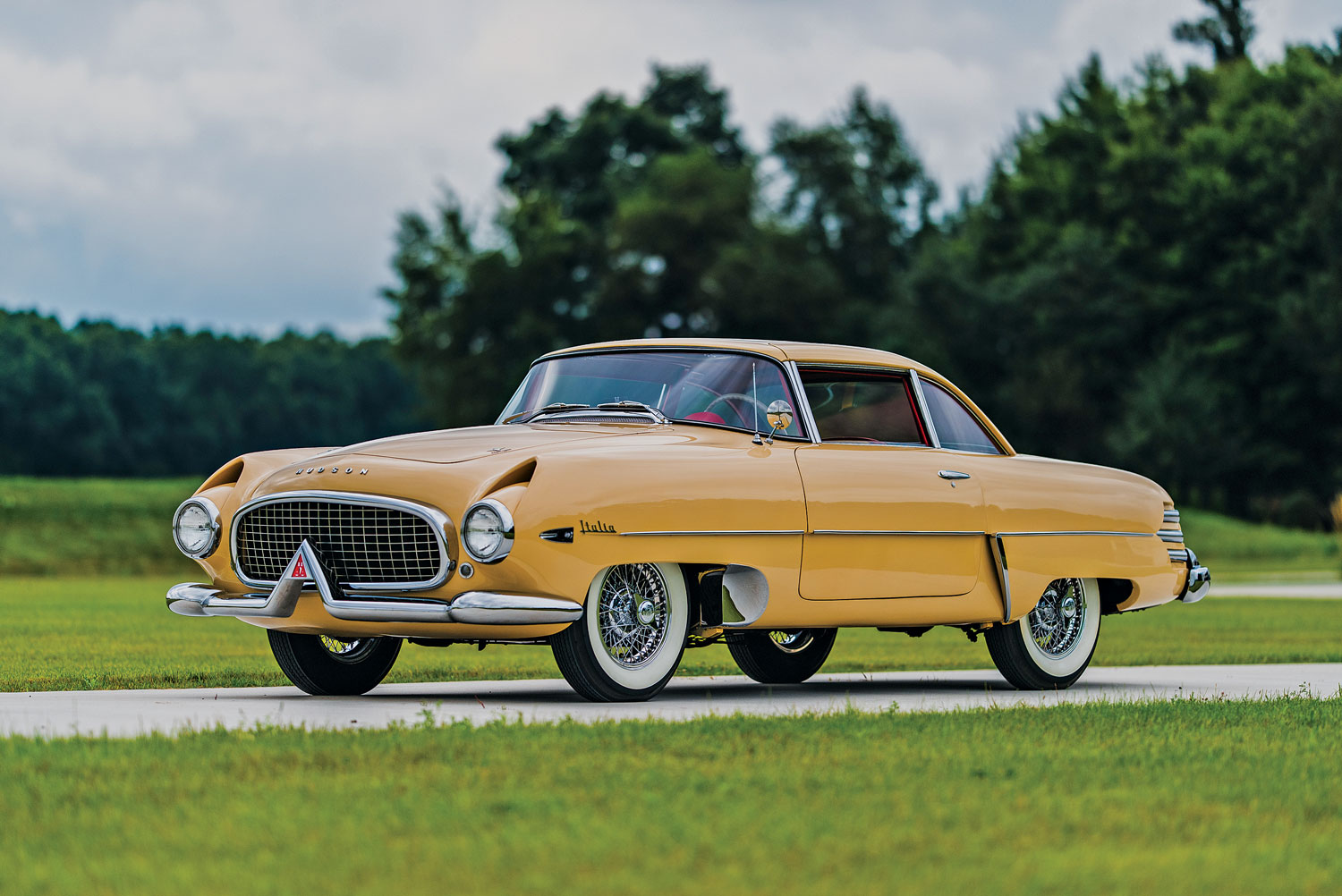Chassis Number: IT10010
Always one for creative thinking, Hudson designer Frank Spring thought he had just the right idea to improve sales of the small Jet. Spring worked with Italian coachbuilder Touring to design the Super Jet, a prototype that looked like nothing else on American roads in 1953, with its wraparound windshield, doors cut into the roof, deep air scoops in the front fenders and a futuristic interior with ergonomic front bucket seats, not to mention jet-fighter-like exhausts. The Super Jet was enough of a sensation that it was put into limited production the following season with very few styling changes and dubbed the Italia.
Unfortunately, the Italia had the bad luck of being rolled out just as Hudson merged with Nash to form American Motors in 1954. The new management ceased the project after just 25 production cars had been built, putting an end to the brief life of the sexiest, most unusual Hudson ever produced.

